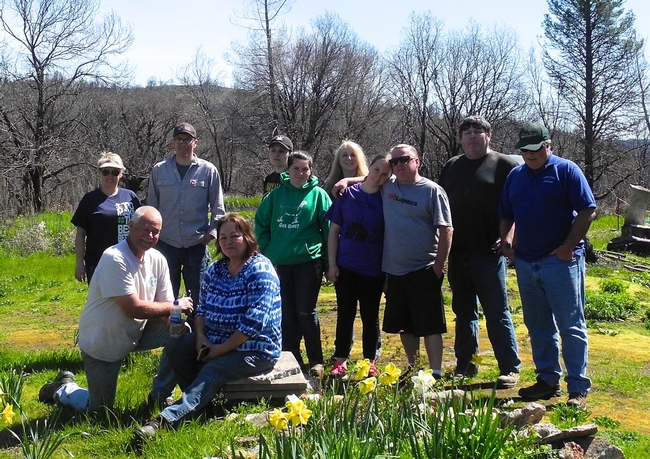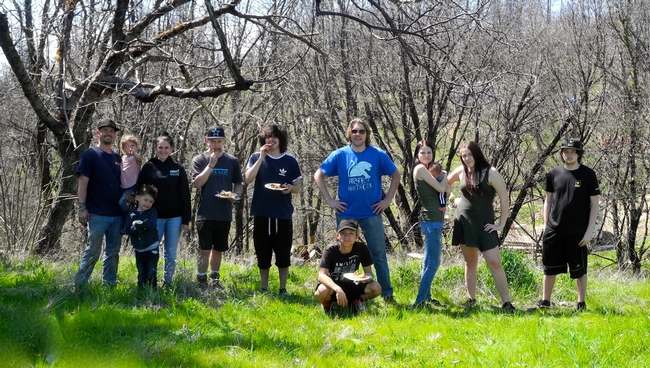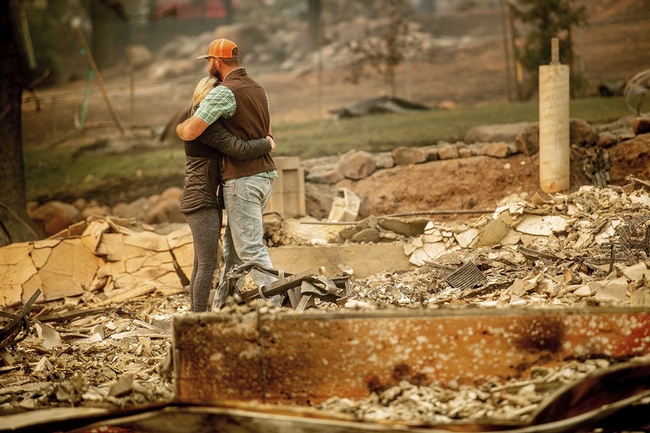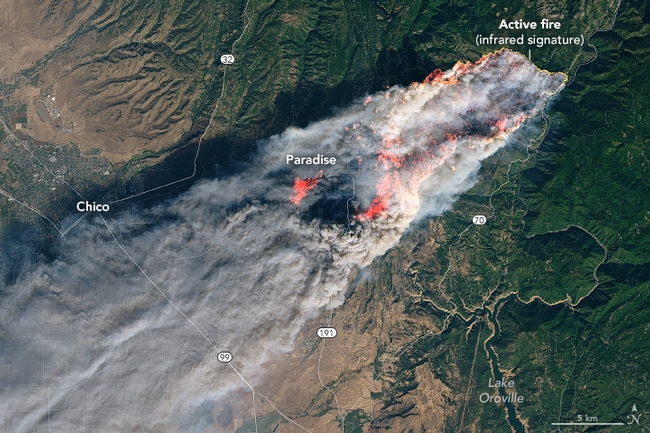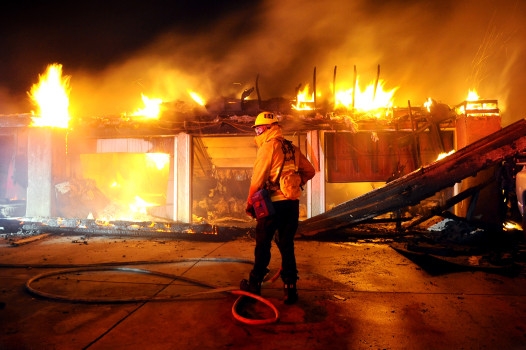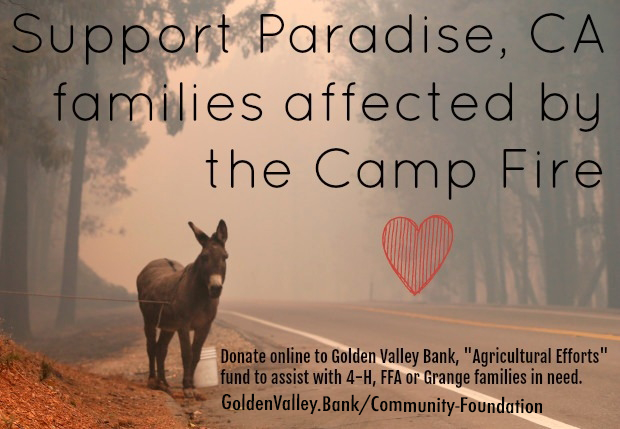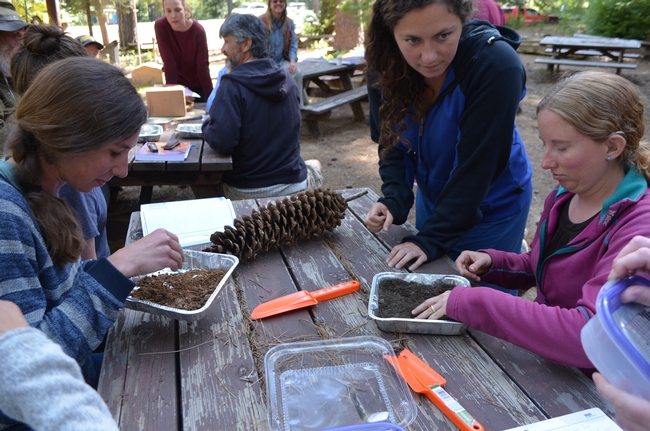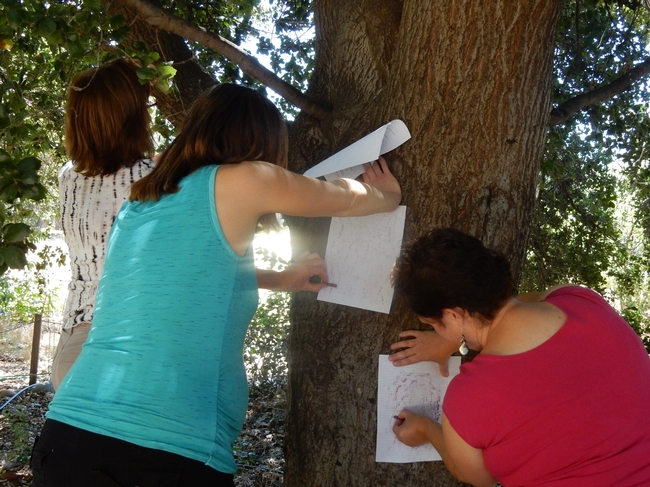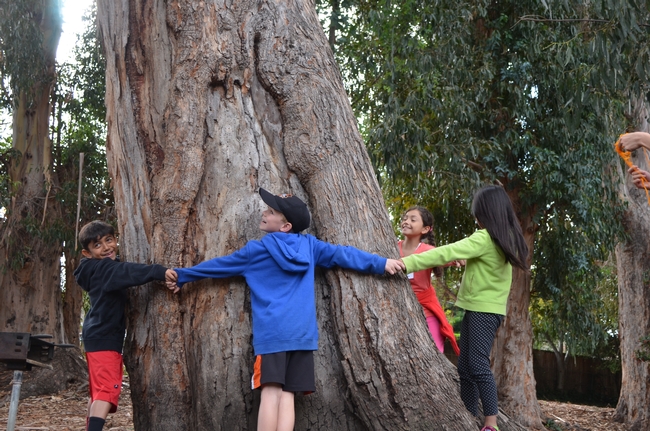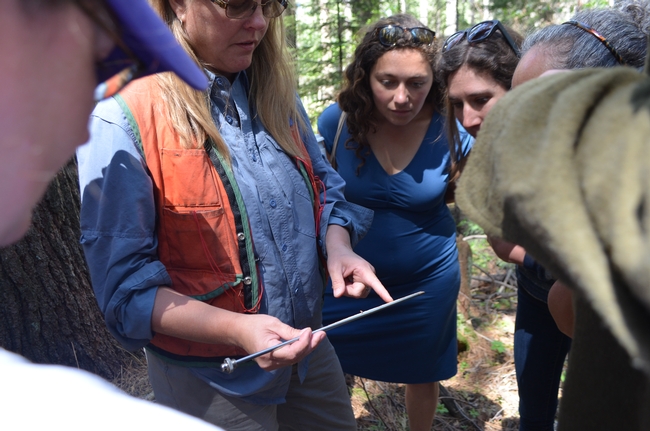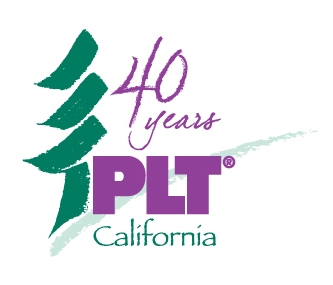
- Author: Donovan Hill
- Author: Kathleen Mowdy
Disturbance. In ecological terms, when a wildfire rages across wild lands, there is a disturbance - a change in the environmental conditions that disrupts the functioning of an ecosystem. The process by which an ecosystem changes over time following a disruption is known as ecological succession, and it takes a very long time. Too long.
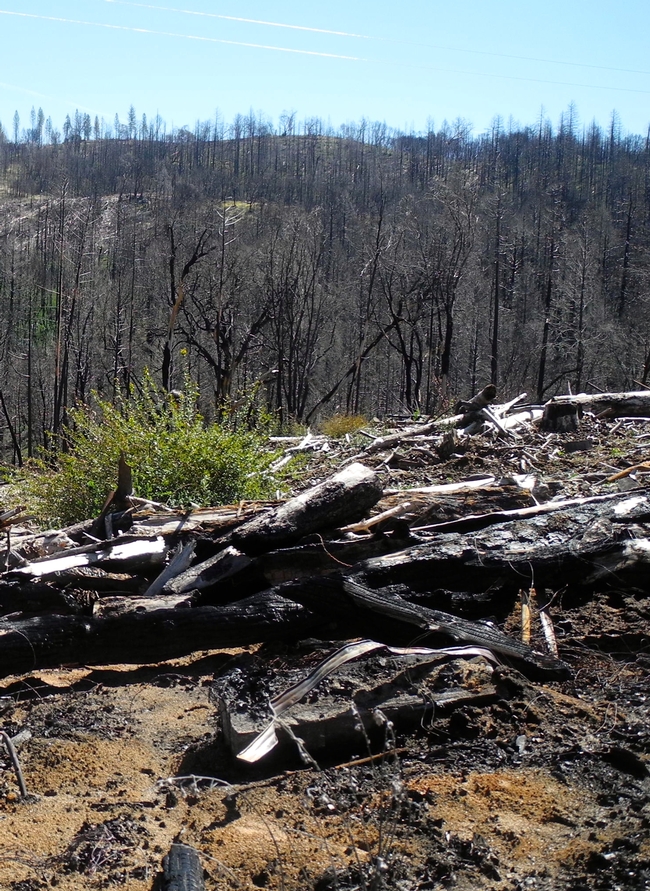
Last year, I wrote an article about our fire recovery efforts in Butte County. We worked hard and accomplished a lot in three fire zones, but restoration is not “one and done.” It takes persistence. Many of the “wildlings” (small wild seedlings) that we transplanted in the Ponderosa Fire zone did not survive the hot summer months. We knew we would need to go back the following spring and plant again, and we were determined.
Then, in November 2018, the Camp Fire raged through 153,000 acres in Butte County. After the most destructive wildfire in California history, it is hard not to feel overwhelmed by the magnitude of recovery work, knowing it would be a long time before the Camp Fire zone would even be ready for replanting. But we had our plan to follow up on our work in the Ponderosa Fire zone. This time, we had fir, pine and cedar seedlings donated by Sierra Pacific Industries (SPI). We knew these seedlings would have a better chance of survival.
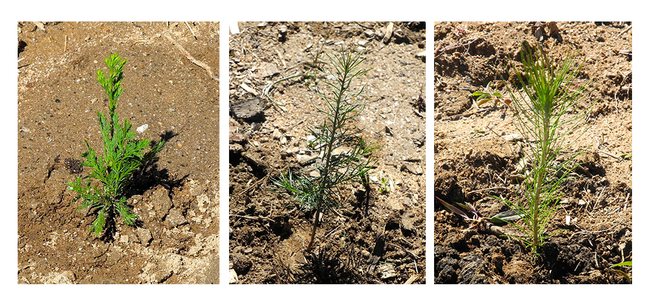
Two foresters from SPI delivered the seedlings, provided instruction on optimal planting techniques, and worked with our crews. Many Feather Falls residents also helped with the planting, including members of the Concow-Maidu of Mooretown Rancheria, whose lands were burned in the Ponderosa Fire.
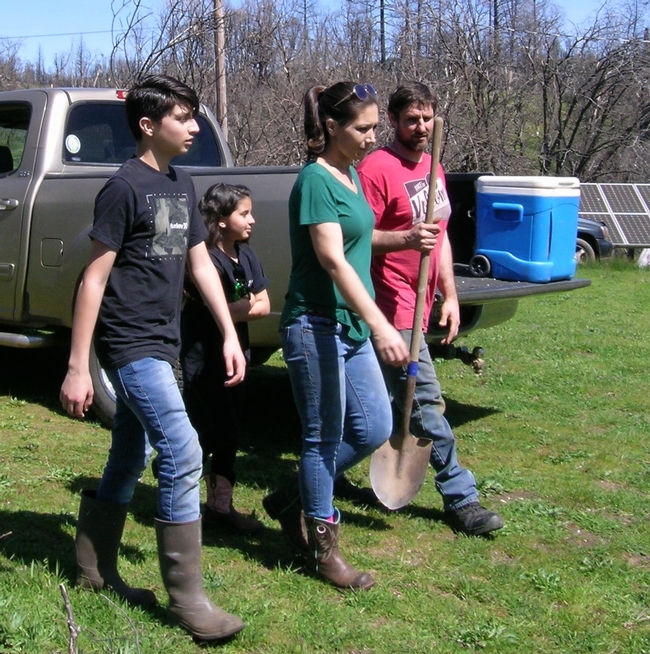
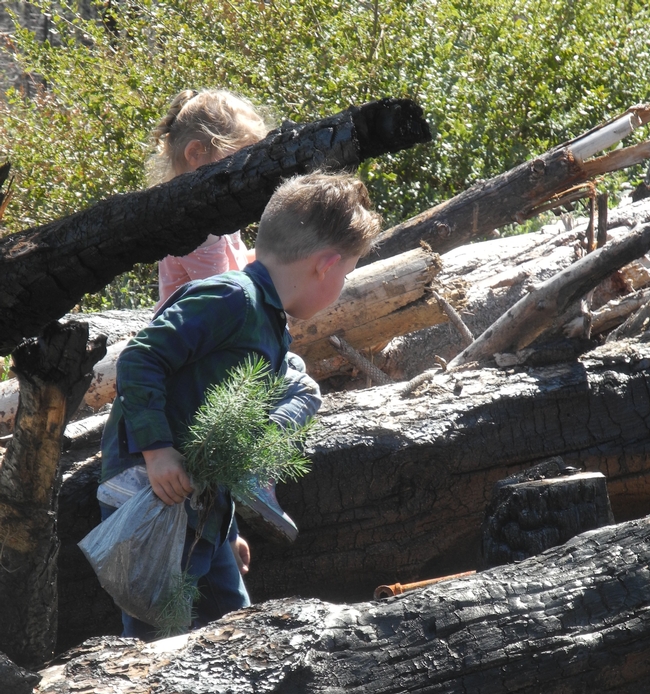
After the planting was completed, we gathered for a tasty picnic lunch provided by Mooretown Rancheria. Everyone enjoyed the beautiful spring weather and feeling of accomplishment.
Since we completed the planting, we have had frequent rain that will give the seedlings a good chance to survive. Building on this success, Oroville Foothill 4-H Fire Recovery Project is already making plans for next year. We hope to arrange for donations of fruit, nut, and ornamental trees for the families who are rebuilding in the Camp Fire communities of Paradise, Magalia, Concow, and Pulga.
As we wrap up our Fire Recovery Project this year and enter another fire season, we are hoping there will be no more “disturbances” to our wild lands. But we will be here with the help of our community, persisting in the best kind of collaboration - caring for our world!
- Author: Jenna Colburn
The past few years California and the nation have faced devastating natural disasters. When we see images of devastation and loss on the news and Internet our first instinct is to mobilize, organize, and help those that are in need.
In the past week California has been hit hard again with wildfires in Butte, Los Angeles and Ventura counties. Currently the brave first responders are still fighting to contain those fires.
Recovery from a catastrophic loss is a marathon, not a sprint.
After the fires are out, there will be a long road to recovery. Fire survivors may go back to survey their properties, but on top of insurance claims and rebuilding decisions, they have to address their immediate needs for shelter. Survivors will need support throughout the long process.
As noted in a Sacramento Bee article, thirteen months ago fires in Sonoma County destroyed about 5,300 homes, including about 2,000 in unincorporated Santa Rosa. Since then, only 598 permits have been issued to rebuild single family homes and only around 30 homes have been rebuilt in the unincorporated areas.
What you can do to help
Map out a plan
If you collect 1000 blankets, who will you give them to and how will you get them where they need to be? Are blankets what are really needed? The only way to answer these questions is to have a good plan with plenty of support in place BEFORE you start your project. This will ensure that your efforts to make a difference will be successful and sustainable.
Contact organizations that are able to accept goods BEFORE you start collecting items. Organizations have different needs at different times during disaster recovery efforts. Unsolicited donated goods such as used clothing, household items, and mixed foodstuff require agencies to redirect their valuable resources away from providing relief services. They will have to sort, package, transport, warehouse, and distribute items that may not even meet the needs of disaster survivors.
Instead: Use the Service Learning Toolkit and Project Planning Guide to help you plan a disaster relief project.
Find reputable local organizations to support
The best way to help in disaster areas is to support relief organizations that are already established in the area.
Some ways to verify relief organizations:
- Give.org- the BBB Wise Giving Alliance
- The State Of California has vetted both volunteer opportunities and organizations that are supporting relief efforts. CaliforniaVolunteers is the state office that manages programs and initiatives aimed at increasing the number of Californians engaged in service and volunteering. Their Current Disasters webpage links to resources for current information on disaster areas in California.
As an individual, you can make personal monetary donations to organizations to support relief efforts.
There are many organizations that are accepting cash donations. The Golden Valley Bank Foundation has set up a fund to directly support 4-H, FFA and Grange members and their families affected by the Camp Fire.
Know our 4-H policy on fundraising and donating to non-profit organizations.
4-H clubs cannot donate cash or fundraise for other non-profit organizations. Please familiarize yourself with the following documents for more clarification:
- Guidelines for Fundraising by 4-H Units and VMOs to Benefit Groups or Organizations
- FAQs for 4-H Units & VMOs - Fundraising to Benefit Groups or Organizations
Create a sustainable Service Learning Project to support disaster relief
With a Service Learning Project, you will participate in the development of community partnerships and share responsibility with community members. You will also take an active role in improving society and improving the quality of life in the community.
Our own 4-H clubs have helped with fire recovery efforts.
Oroville Foothill 4-H Club's fire recovery project was shared in a blog post by 4-H member Donovan Hill.
Use the Service Learning Toolkit and Project Planning Guide
The Service Learning Toolkit and Project Planning Guide can help you plan your disaster relief project.
Evaluate your plan to ensure it is High Service/High Learning using the Standards of Quality in Service Learning. This 10 question checklist will help you determine how to make this a positive learning experience that benefits the community at the same time.
This original blog post from 9/1/17 was updated and edited to include current information. Jenna Colburn is the Program Coordinator for Civic Engagement. If you have any questions regarding creating a service learning project, please contact Jenna at jcolburn@ucanr.edu.
- Author: Sandra Derby
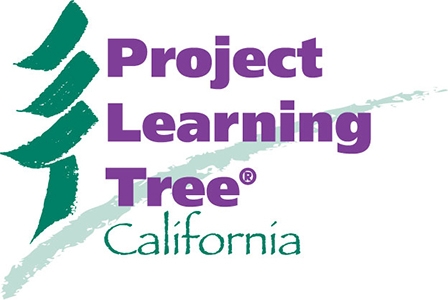
- Explore current issues
- Investigate as a forester
- Engage in field studies
These sessions will inspire you to create your own version of Project Learning Tree that will enhance the unique adventures of 4-H summer camp.
Building on the support of the American Forest Foundation, UC Cooperative Extension, and CA Project Learning Tree, we are working together to introduce and integrate PLT ideas and activities into 4-H Programs. Our goal is to integrate forest ecology and field skills into the amazing experience of summer camps all over California.
Sign up for one, two, or all three sessions
Participants in each session will receive an activity folder with ideas and resource materials.
If you attend all three sessions, you will receive a free K-8 Project Learning Tree Guide with over 90 activities.
PLT Session I: California Naturalist
Participants will explore the amazing forest environment through Project Learning Tree activities and learn strategies to integrate naturalist explorations into the 4-H Camp experience. Some favorite activities we will engage in…Looking at Leaves, The Fallen Log, Every Tree for Itself….and make a clay leaf print to take home!
Being a Naturalist/ nature journaling/ leaf prints:
- Looking at Leaves
- Fallen Log
- Every Tree for Itself
PLT Session II: Forest Steward
Participants will learn how to take action as citizen stewards. Hike into the forest and observe what makes this environment so uniquely essential for a healthy California. Learn how to map a field study area using basic tools and design a field investigation through inquiry study. And learn what opportunities are out there to connect with community efforts, engage in studies with researchers, and initiate action in your own 4-H Camps and local communities.
Working the tools/ actions for Citizen Science and Stewardship:
- Trees As Habitats
- Soil Stories
- How Big is Your Tree
PLT Session III: Forestry Challenge!
Participants will be engaged in several forestry investigations to understand how foresters manage and ensure healthy forests. Each investigation will lead to team work, exploration, and ultimately the Forestry Challenge! We will show you how to design an exciting and fun challenge for your camp program!
Challenge your skills and knowledge:
- How Big is Your Tree II
- Trees in Trouble
- Living with Fire
Developed by the PLT Camp Program Development Committee
The PLT Camp Program Development Committee is responsible for the design, development and delivery of enhanced Project Learning Tree training and materials in 4-H Camp programming. Their goal is the integration of selected PLT field based activities, focused on the ecology of CA forests, into existing camp programs resulting in strengthened environmental based learning for camp participants.
Learn more about Project Learning Tree in California! Contact Sandra Derby at stderby@ucanr.edu with any questions.
Sign up for the California 4-H Camping Conference!
2018 California 4-H Camping Conference
April 6 - 8, 2018
Redwood Glen Camp
100 Wright Drive, Loma Mar, CA 94021
The 2018 California 4-H Camping Conference brings together the adults and teen leaders who help plan and administer camping programs across California in a weekend of hands-on training, networking, and learning experiences.
The California 4-H Camping Conference is held every other year. Don't miss this great learning opportunity to make the best camps better!
*You do not have to be part of a 4-H Camp to participate. Please contact Marianne Bird at mbird@ucanr.edu if you are not a current 4-H member or volunteer.
